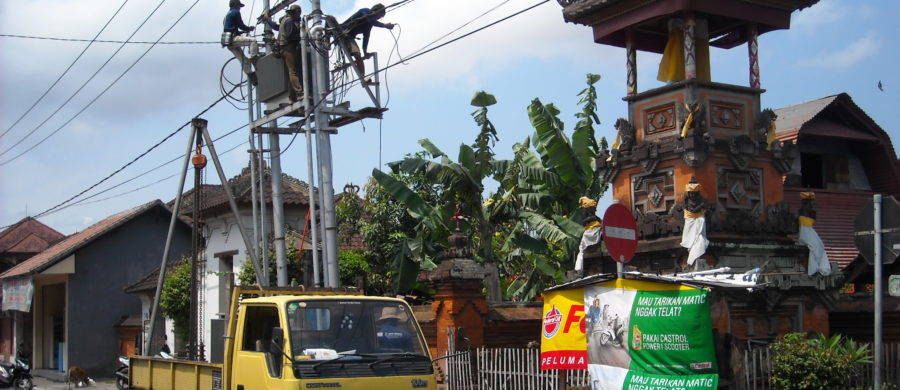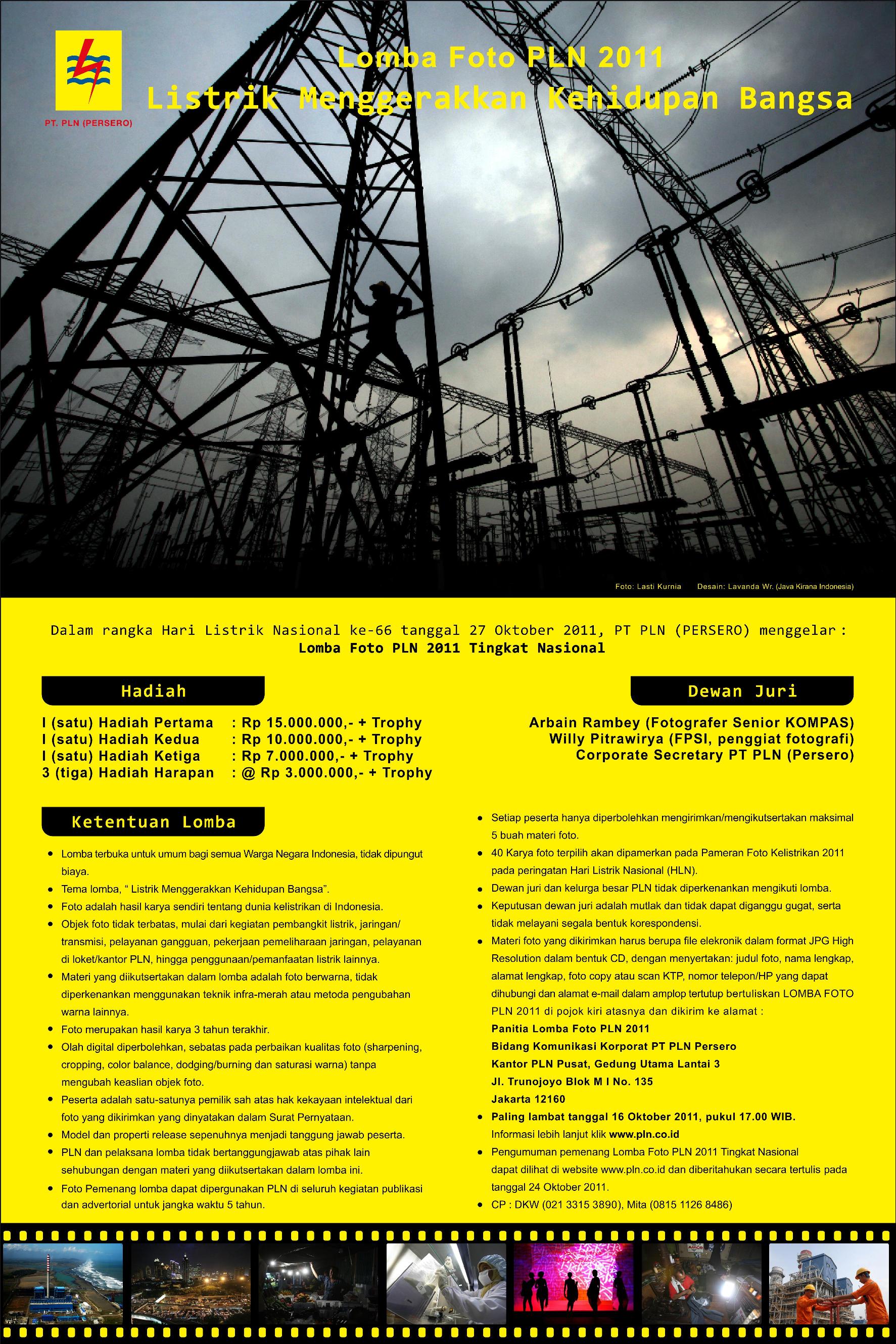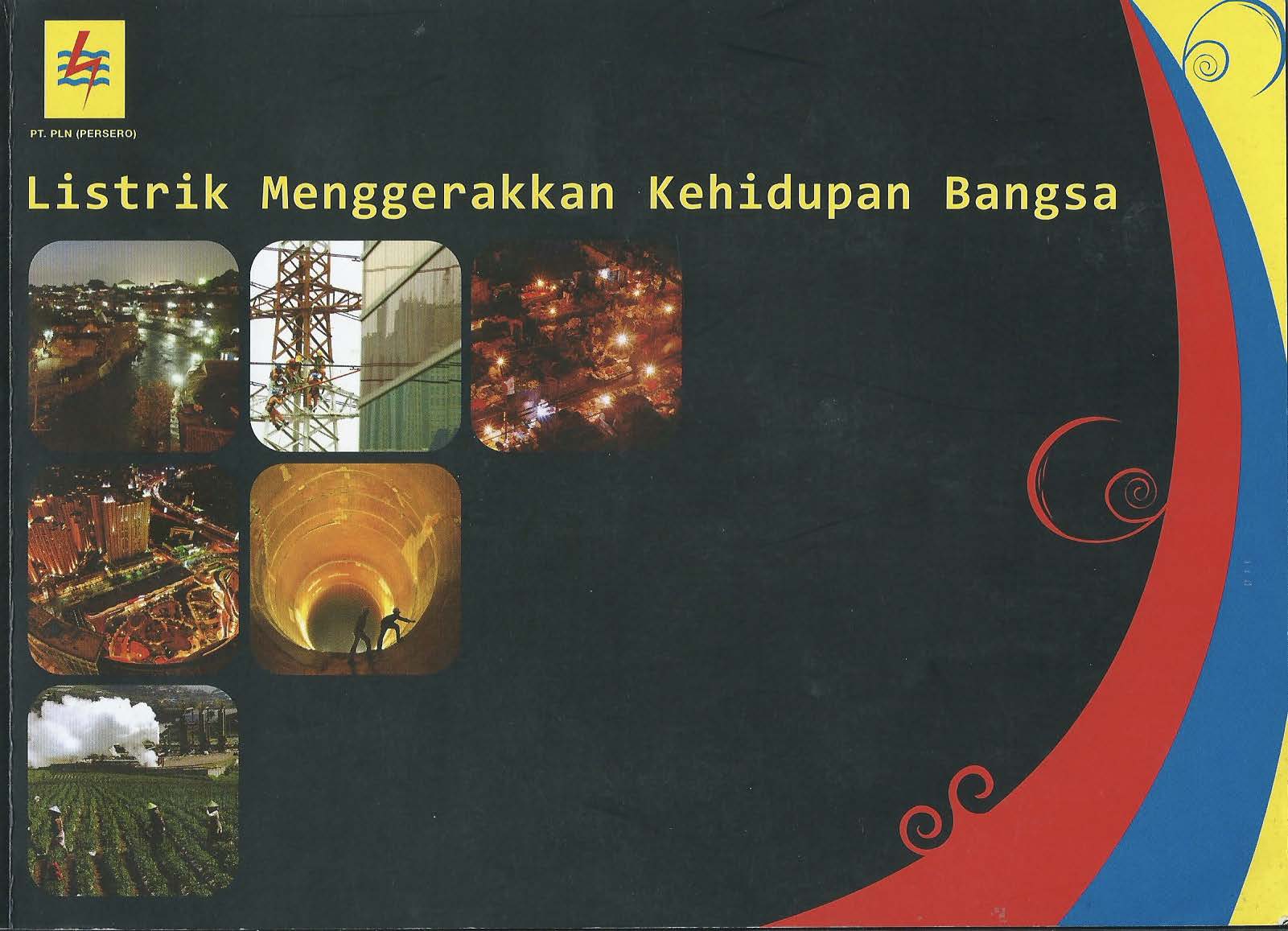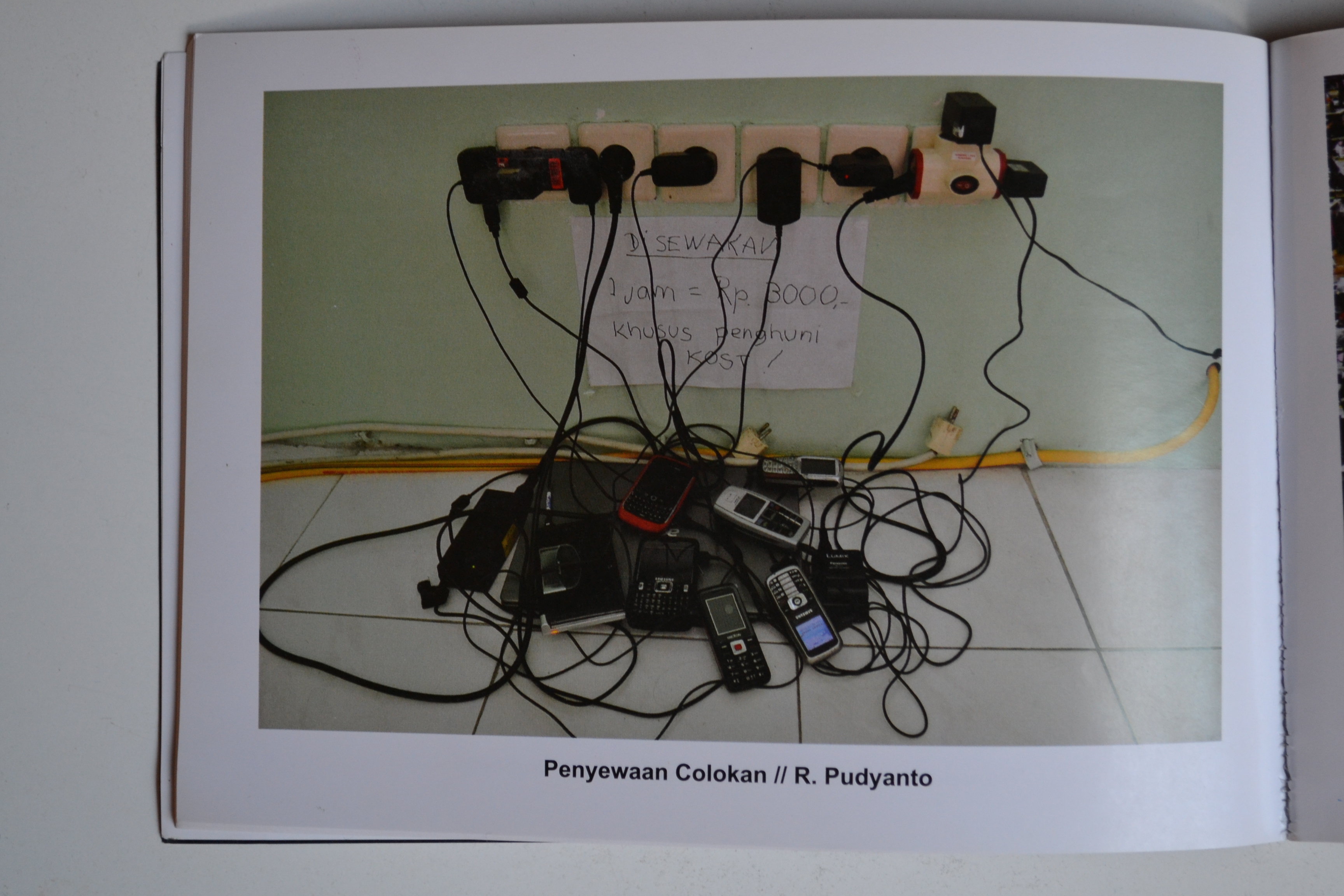
National Electricity Day: From “Electricity-Minded” Nation to “My Idea for PLN”
Technology’s Stories vol. 5, no. 4 – DOI: 10.15763/jou.ts.2017.12.04.04
PDF: Mohsin_National Electricity Day
On 27 October 1960 President Sukarno delivered a speech commemorating the fifteenth anniversary of the National Electricity and Gas Day in Kebayoran Baru, Jakarta. At a time when Indonesia was still a young nation and only a handful of urban areas had electricity, Sukarno wished that the Indonesian people would be more “conscious of the importance of electricity” and turn more into an “electricity-minded” people.[1] It was also his dream that within a quarter of century:
in each house on the tops of the mountains there should be public radios, each town of some significance should have landing strips for airplanes, communication should be smooth everywhere, our country should be a country which is full of not only agrarian enterprises but also industrial enterprises. We cannot live anymore without electricity, without steam; not very long from now we will not even be able to live anymore without atomic energy. Our ideal is development in that direction.[2]
Little did Sukarno realize that efforts to fully electrify Indonesia, an archipelago of more than 17,000 islands with challenging topography, would take much longer than 25 years. Even now, not all households in Indonesia have been electrified. Indeed, some whole villages at the tops of mountains are still not connected to the grid.[3] But in the more than five decades since Sukarno’s speech, considerably more Indonesians are aware of the importance of electricity as it connects to their daily lives and to the life of the nation. This was achieved thanks in part to the annual commemoration of National Electricity Day (Hari Listrik Nasional). Why did Indonesians dedicate a “special day” to celebrate electricity, and how have these celebrations shaped the way Indonesians think about this popular technology?
It began in 1945, not long after Indonesia declared their independence from the Netherlands (17 August 1945). On 27 October President Sukarno created the Gas and Electricity Agency (Djawatan Listrik dan Gas) under the Department of Public Works as the first organization in post-independence Indonesia founded to manage the provision of gas and electricity for the country. In 1960, the government deemed the date as so significant to the history of the country that by Ministerial Decree it was set as National Electricity and Gas Day.[4] The presence of President Sukarno who gave a memorable speech highlighted just how special and significant this day was. PT PLN, the state-owned electricity company, celebrated the special day annually until 1975 when the annual commemoration was canceled. In lieu of the Electricity Day, PT PLN was instructed to celebrate the “Service Day of Department of Public Works and Electrical Power,” which occurred every 3 December. This change, however, did not last long. Deciding that the country needed a special day to celebrate all things electrical, and that 27 October was a day of national significance, the Minister of Mines and Energy reinstated National Electricity Day in 1992.
Having a dedicated day to celebrate “electricity” may seem odd, but in Indonesia it is one of many such holidays that build and reinforce national identity. Indonesia also dedicates national days to “the press” (9 February), “education” (2 May), “children” (23 July), “technological awakening” (10 August), “sports” (9 September), and other special themes. When UNESCO acknowledged batik, an Indonesian style textile, as a Masterpiece of Oral and Intangible Heritage of Humanity on 2 October 2009, the Indonesian government decided to turn that date into National Batik Day. The most recent national day added to the list is the National Santri (Islamic Students) Day, which falls on 22 October.[5] The stated goal of having these “national days” is to commemorate a momentous occasion, a special accomplishment, or to honor the contribution of a noted individual in a certain area. The unstated purposes are to remind citizens of the idea of the Indonesian nation and to habituate them into reproducing and maintaining Indonesian nationhood.
Since its reinstatement in 1992, Indonesians have been celebrating the National Electricity Day every year. Depending on the year (and the available budget), PT PLN usually organizes charitable works for communities, a variety of sport tournaments for its employees, and several competitions. For the past several years, the company has also been holding a seminar on electricity attended mostly by PLN engineers and managers. The annual celebration typically culminates in an awards night in which the company’s best employees, units of operation, as well as technical and business innovators are acknowledged and awarded coveted prizes. Notably, these celebrations include the mandatory flag-raising ceremonies held at the PLN’s main and branch offices throughout the country. Presided over by the head of each of PT PLN units, this ceremony emphasizes the national importance of their work, and instills a sense of pride in what they do, which is electrifying their nation.
Philanthropic works too underscore PT PLN as a national actor, broadly interested in the well-being of the nation. The charity works PT PLN employees organize each October have benefited orphans, poor students, the elderly, and other vulnerable groups. A few times, the company have also held mass marriage and mass circumcision for those who needed the services but could not afford them. Perhaps the most notable example of PLN’s philanthropic work in celebration of National Electricity Day was the 2004 blood donation campaign. The event drew 53,369 donors who gave a total of 13.3 million cubic centimeters of blood, making it the largest blood donation event ever in the country.[6] Coverage of these events have raised the company’s profile nationally. But the logic of celebrating a popular technology by providing services for the needy is more than just simple public relations. National acts of public service help to articulate the nation-making significance of electricity provision and the PT PLN itself as an institutional actor that takes the welfare of the nation seriously.
The commemoration of the National Electricity Day often reflects PT PLN executives’ interests and concerns, which may in turn reflect their own agendas with respect to national needs and priorities. When Djiteng Marsudi, a highly nationalist and patriotic executive, was the head of PLN for example, he made sure to include a visit to the National Heroes Cemetary on the agenda of the National Electricity Day celebration, so that PLN employees (and perhaps others) would appreciate the sacrifices made by those who fought for and defended Indonesian independence. When Dahlan Iskan was appointed CEO in October 2009, he used National Electricity Day to create a more egalitarian corporate culture and launch special initiatives. One of them was to connect 1 million new electricity customers on 27 October 2010, a technical feat initially deemed impossible by many people.[7] The campaign, known in the media as “Go Grass” (Go Gerakan Satu Juta Sambungan) aimed to cut by more than half the number of wait-listed electricity customers, some who had waited for 5 years to get connected.[8] This initiative was so successful that PT PLN followed it with Go Grass 2 the following June.[9] Iskan’s actions as a CEO garnered such wide media coverage that he was consequently appointed Indonesia’s Minister of State-Owned Enterprises after less than two years on the job at PT PLN. To these executives, electricity is much more than just building power plants, transmission lines, and adding new subscribers. It’s a popular technology that they can use to shape a corporate culture, introduce new ways of doing things, and draw together the national community.
Coverage of events surrounding the celebration of the National Electricity Day fill the company’s internal magazines and newsletters as well as the national print media. On certain special occasions such as the 2004 blood drive and the 2010 Go Grass, the national media covered them more widely. In these cases, an already popular technology is made even more popular in the public’s imagination.
A call made by PT PLN for the public to celebrate the National Electricity Day through writing and photography competitions has generated a big enthusiasm from people of all walks of lives who have used the opportunity to share their thoughts, desires, criticisms, and hopes for a “brighter” Indonesia, literally and metaphorically. For example, a photo contest held in October 2011 with the theme “Electricity Moves the Life of the Nation” (see Figure 1), attracted 650 participants with more than 2500 submitted images.[10]

Figure 1. PLN Photo Contest Call, 2011
PT PLN showcased some of the winning entries in a temporary exhibit at the Gandaria City Mall in Jakarta.[11] The company also published the 40 winning entries in a small book with the same title as the theme (see Figure 2).

Figure 2. Prize Booklet for the PLN Photo Contest, 2011
The first prize winner was a photo by Boy T. Harjanto entitled “Illuminating the Code River.” My favorite is a photo showing six electrical outlets with phone chargers plugged in all of them with an advertisement renting the “charging stations” for Rp 3000 (about USD 0.25) for one hour (see Figure 3).

Figure 3. An entry from the PLN Photo Contest. Image by R. Pudyanto (published with permission from photographer.)
In October 2016, the electricity company held another photo contest with a theme “PLN Tidak Pernah Tidur” (PLN Never Sleeps). The 14 winning entries were tweeted by a PLN branch office in Jogjakarta (see Figure 4).

Figure 4: Tweet from PLN 2016 Photo Contest
Perhaps the most well-known competition that reflects the public’s opinions of PT PLN and Indonesia’s electricity generally was the blog contest launched in 2014, organized together with BLOGdetik, a free blogging platform of Indonesia’s well-known digital news website detik.com. Blogging is extraordinarily popular in Indonesia. Bloggers everywhere blog their interests, which run the gamut from the their favorite recipes to proselytizing their religion.[12] Growth in Indonesian blogging has been astounding. One study notes, “The [Indonesian] blogosphere has grown rapidly from only 15,000 in 2007 to 5 million as of 2011.”[13]
The PLN-sponsored blog competition, called “IdeKU untuk PLN” (My Idea for PLN) asked participants to write their thoughts for a better PLN, enticing bloggers with a first prize sum of Rp 10 million (about USD 1000).[14] The winner was Kukuh Tri Pamungkas Wicaksno, who in 2013 conceived an idea to develop a website informing citizens about PLN’s rolling blackouts and recommended that PLN develop an open application to which users and developers could contribute.[15] Other entries included a blog with eight suggestions for PLN to “keep shining,” which included increasing technological innovation, spreading electricity more widely, providing excellent customer service, and campaigning to conserve electricity.[16] Another blog highlights some challenges and solutions for PT PLN to transform into a “modern electricity company.” One of the challenges identified by this blogger is the problem of illegal electricity connection and electricity theft, which is often facilitated by PLN’s own employees. She suggested that the company needs to deal with this issue “intensively and systematically” by sanctioning both the electricity thieves and the employees who helped them.[17]
Sometimes, PT PLN has used the special occasion to reflect back on their journey and try and articulate their hopes for the future. This “looking back, looking forward” exercise is usually written in articles published in the company’s various internal magazines. Last year, PT PLN commemorated the National Electricity Day with a simple theme “Real Work Illuminating the Country” (“Kerja Nyata Terangi Negeri”). In an eponymous article, the company acknowledges the challenges it has faced in the past seven decades electrifying the country and emphasizes that its work is far from over. With a new government mandate to install an additional 35,000 MW generating capacity across the country, PT PLN hopes to achieve its dual (and often conflicting) missions: to become a better corporation accumulating more capital and to carry out its “social” goal electrifying very single village in the country.[18]
David E. Nye once wrote, “the meaning of a tool is inseparable from the stories that surround it.”[19] Different societies create and attribute their own stories about the technologies they invent and develop. In the case of electricity, Indonesians have been building stories, meanings, hopes and dreams around this technology. One manifestation of this technology story building and telling is the establishment, commemoration, and public popularity of the annual National Electricity Day. Although Sukarno’s hope that Indonesia would be fully electrified in 25 years did not come to pass, his hope for an “electricity-minded” nation certainly has.
Anto Mohsin is Assistant Professor in Residence at Northwestern University in Qatar (NU-Q). His dissertation examined the sociopolitical history of Indonesia’s electrification efforts during the so-called “New Order” period (1966-1998). He is currently turning his dissertation into a book manuscript. In October 2011 he enthusiastically participated in a photography contest to commemorate Indonesia’s sixty-sixth Electricity Day, but didn’t win any prize.
Suggested Readings
Mohsin, Anto. “Wiring the New Order: Indonesian Village Electrification and Patrimonial Technopolitics (1966-1998),” Sojourn: Journal of Social Issues in Southeast Asia 29:1 (2014): 63-95.
Mohsin, Anto. “Ligting ‘Paradise’: A Sociopolitical History of Electrification in Bali” East Asian Science, Technology and Society: An International Journal 11(2017): 9-34.
Nye, David E. Technology Matters: Questions to Live With (Cambridge: MIT Press, 2006).
Nye, David E. Electrifying America: Social Meanings of a New Technology, 1880-1940 (Cambridge: MIT Press, 1990).
[1] Sukarno, “Speech by President Sukarno on the 15th Anniversary of Electricity Day, Kebajoran Baru, 27 October 1960.” (Speech, Indonesian National Archive: President Sukarno’s Speech no. 227, 1960), 1.
[2] Sukarno, Speech by President Sukarno on the 15th Anniversary of Electricity Day,” 5. This is the official translation
[3] The state-owned electricity company reported that the country’s electrification ratio was at 89.5% as of June 2016. See“Kerja Nyata Terangi Negeri,” Fokus October 2016, 6-8.
[4] “Timbul-Tenggelam Hari Listrik PLN di Tengah Indonesia yang Berubah,” Floeksi October 2006, 8.
[5] Alfurkon Setiawan, “With National Santri Day, Presiden Jokowi Hopes to Strengthen Spirit of Nationalism,” http://setkab.go.id/en/with-national-santri-day-presiden-jokowi-hopes-to-strengthen-spirit-of-nationalism/
[6] “Peringatan HLN ke-59: Menyentuh Nurani dan Jiwa Sosial,” Fokus October 2004, 4 – 6. MURI record.
[7] “Listrik Untuk Sejuta Pelanggan,” Fokus October 2010, 4-6.
[8] Catatan Dahlan Iskan, “Sehari Satu Juta Sambungan: Untuk Apa?” Accessed 13 July 2017, https://dahlaniskan.wordpress.com/2010/10/26/sehari-satu-juta-sambungan-untuk-apa/
[9] Investor Daily, “PLN Tambah 1,2 Juta Sambungan Pelanggan,” Accessed 16 July 2017, http://id.beritasatu.com/energy/pln-tambah-12-juta-sambungan-pelanggan/13753
[10] PT PLN (Persero), Listrik Menggerakkan Kehidupan Bangsa, October 2011.
[11] Dede Kurniawan, “Dua Tangis dan Ribuan Tawa,” 3 November 2011. Accessed 8 October 2017, https://foto.okezone.com/view/2011/11/03/4/3743/dua-tangis-dan-ribuan-tawa
[12] Merlyna Lim, “Life Is Local in the Imagined Global Community: Islam and Politics in the Indonesian Blogosphere,” Journal of Media and Religion 11(2012): 127-140.
[13] Merlyna Lim, “Many Clicks but Little Sticks: Social Media Activism in Indonesia,” Journal of Contemporary Asia, 2013, p. 4. http://dx.doi.org/10.1080/00472336.2013.769386 Accessed October 2, 2017.
[14] http://akudanpln.blogdetik.com/ Accessed 16 July 2017.
[15] http://kukuhtw.com/2014/10/17/ideku-untuk-pln/ Accessed 16 July 2017.
[16] http://genrambai.blogdetik.com/2014/10/17/8-cahaya-demi-pln-yang-terus-benderang/ Accessed 16 July 2017.
[17] http://rianadewie.blogdetik.com/2014/10/17/transformasi-pln-menjadi-perusahaan-listrik-modern/ Accessed 16 July 2017.
[18] “Kerja Nyata Terangi Negeri” Fokus October 2016, 6-8.
[19] Nye, David E. Technology Matters: Questions to Live With (Cambridge, Mass: MIT Press 2006), 3.
